- Home
- Nick Hornby
31 Songs Page 9
31 Songs Read online
Page 9
And all my life I have relied on others to tip me off, enthusiasts effectively and happily serving as Austenesque matchmakers between eligible wallflower music and those who have the capacity and resources to love it. It’s people like these who are the difference between a feeble little CD collection that will lit into some stupid designer tower, and a wall of shelves occupying a disproportionate part of your living room.
Update
Lee – like anyone who owns a small music retail outlet – hasn’t been doing so well recently. The first half of 2002 has so far failed (despite my clearly foolish optimism, expressed elsewhere in these pages, about the never-ending supply of good new music) to produce just about any half-decent albums; the British music industry’s current obsession with boy bands, and girl bands, and boy-and-girl bands, and the winners of TV talent contests, isn’t much use to anyone trying to provide music for adults. At the time of writing, there is a danger that Wood might go out of business.
I have sometimes been less than wholehearted in my enthusiasm for independent shops. Oh, of course I will always try to avoid giving my money to chain stores if I can help it; it’s just that sometimes, if you’re looking for an obscure American import album, or an arcane book of non-fiction, you’ll have a much higher strike-rate if you go to the biggest fuck-off branch of Tower or Borders that you can find. This is regrettable, but forgivable, because a lot of small stores can’t afford to take a punt on something that will sit ignored on their shelves and in their browser racks for months and months.
But what we will miss, when our entire culture is sold through one big chain-store shopping mall called Border-stones, is the stuff that floats to the surface on a bubble of personal enthusiasm. It’s fine if you have some prior knowledge of your obscure American album. But what if you didn’t even know that you wanted to hear it? How will you notice it then, among the piles of Jennifer Lopez albums? The most depressing thing about chains is being confronted by the same books and DVDs and albums everywhere you go, the same bestseller lists, the same three-for-two offers. (And yes, before any smart-arse points it out, I too am sick of seeing my books everywhere when I go shopping.) I would like to continue to discover new things; that isn’t going to happen anywhere that’s floated on the Stock Exchange. Please shop at Wood, or your nearest equivalent, or you’ll be sorry.
Wood Music ceased trading in the summer of 2003.
One tries hard to avoid exemplifying cliché; looking at the art on your walls and the books and CDs on your shelves, you see only a well-rounded and uncategorizable human who has successfully avoided stereotype all your life. If you are a white male, however – especially a white male aged forty-plus – the chances are that you are sadly and predictably deficient in one particular area: you can’t dance for toffee. Indeed, not only can you not dance, but you are also unwilling even to try unless you’re drunk or near-drunk, and unless you’re surrounded either by complete strangers (especially complete strangers who are older and/or even more disastrously uptight and stiff-limbed than you are) or by people you have known for a minimum of a quarter of a century, who are also drunk or near-drunk. I would love to be able to say, at this point, that I have shattered the mould; that despite my age, gender and nationality (because Englishness, I fear, is hardly helpful in this regard), I hit the dancefloor with all the enthusiasm and lack of self-consciousness of a three-year-old (and a three-year-old girl, at that) and the fluidity of a young Baryshnikov … But of course, I can’t. The dancefloor is still, to me, the social equivalent of the North Sea during English seaside holidays – something to be treated with the utmost fear and caution, something you walk towards and away from over a period of several hours while battling with your own courage, something you plunge into briefly and uncomfortably while every corpuscle in your blood screams at you to get out before it’s too late, something that leaves lots of important parts of you feeling shrivelled.
When I was in my mid-teens, I used to go to a dance every single Saturday night somewhere in my neighbourhood, in order to meet girls, but of course I never actually used to do any dancing. To go to a dance in order to dance would have been like going to a theatre in order to act: the evidence of your own eyes told you that some people did it, but you didn’t know any of them. You simply paid to watch them.
Part of the trouble was the music I actually listened to in my mid-teens. You may as well have attempted to eat it as dance to it. Heavy rock was not light on its feet – that was the whole point of it – and though there was great dance music being made at exactly the time when I was attending dances, I wasn’t interested in it. In fact, we heavy-rock fans rather despised it for its lack of seriousness. (I would, inevitably, spend much of the next decade trying to buy it all, at three or four times the prices I would have to have paid at the time.) Punk, which obliged one to jump up and down very fast while pushing somebody else over, was hardly designed to make me any more supple or elegant. But then, in the mid-eighties, I found myself once again attending dances of my own volition, and I wasn’t even going in order to pick up girls. I went because I loved it. The club was called The Locomotion, and it took place every Friday night in Kentish Town, in North London; for a while I would feel miserable if I was not able to attend, just as I did when I couldn’t see my football team play. The DJ, a woman called Wendy May, played a brilliant mix of funk, Motown, ska, campy pop (Tom Jones’s ‘It’s Not Unusual’ was a floor-filler) and, occasionally, house music, which had only just been invented, and had not yet become the ubiquitous pest that has since overrun clubs; everything I heard made me want to dance, and for some reason I was able to. (When I say ‘I was able to’ I mean, of course, simply that nothing prevented me, rather than that I was suddenly granted the power of eloquent Terpsichorean expression. The Locomotion was a magical kingdom, but it couldn’t work miracles.) It’s a version of The Locomotion that Rob revives in High Fidelity, as those who used to attend know.
Wendy May’s taste helped. The Motown songs she played sounded perfect, but they weren’t the Motown songs I knew and had tired of. The Velvelettes’ razor-sharp ‘Needle in a Haystack’, for example (which I went straight out and bought – along with George McCrae’s ‘Been So Long’, and ‘Groovin’ With Mr. Bloe’, and loads of other things), I’d never heard before: like all good DJs, May somehow succeeded in making the song hers, something that distinguished and defined her club. It probably helped – as it always helps with me, in any field – that she was so clearly a fan.
But it wasn’t just the music. I felt that I understood the people, too – they were all early to mid-thirties, scruffy and relatively impoverished; they didn’t and couldn’t intimidate me, and very few of them looked as though dancing was something that they were thinking of doing professionally: liking it didn’t apparently mean that you had to be brilliant at it. I still had to have a few drinks to take the plunge, but it was only a few: I didn’t have to drink until I had grown four legs and had convinced myself (paradoxically) that I could have left a 25-year-old James Brown open-mouthed in admiration. I still liked to watch, too. There was nothing better than to look down from the balcony in the Town & Country Club, listen to great music, and watch several hundred people have the best Friday night you could possibly have in Kentish Town.
And then I stopped going, for reasons that escape me now – probably age had something to do with it, the increasing inability to operate on Saturday morning after a good Friday night – and I went back to being my usual, hopelessly embarrassed, self, as if I had indeed left a magical kingdom behind. Wendy May lives in the country now, apparently, but recently she put on a one-night-only revival at a different venue, right down the end of my street. I didn’t go. Well, I would have fell a right idiot, wouldn’t I?
27 Let’s Straighten it Out
In the early eighties, after punk had died its slow death, I found it hard to care about white rock music very much. Some of my people – Costello, Springsteen – made a decent album every now and again,
and a couple of great bands – R.E.M., the Smiths, Dexy’s Midnight Runners – emerged to help us forget Those We Had Lost. But mostly, it seemed, the pubs and clubs and record racks seemed to be filled by bands who had absorbed punk’s ramshackle amateurism and none of its point, bands who wore long green raincoats and didn’t make jokes very often. They were po-faced in ways only the young want to be, and at twenty-four or twenty-five I was just old enough to want to sneer at their earnestness, just as at eight or nine I wanted to go to bed a little later than my sister: those age differentials are important when you’re very young.
But black music was for grown-ups; soul songs were about divorces and adultery and lived lives, and it was possible to find big soul artists hitting the peak of their game: Bobby Womack, Anita Baker, Luther Vandross, Prince, Cameo, Marvin Gaye, Teena Marie (who was white, but hung out with Rick lames and made albums for Motown) and the producers Jimmy Jam and Terry Lewis all made great records in the first half of the eighties. By contrast, in rock music – as Gramsci said, probably in one of his Rolling Stone reviews – the old was dying and the new could not be born, and a variety of morbid symptoms were appearing. And the soul shows were a revelation: a mixed-race crowd having a great time, whooping and dancing (as in, dancing, with feet and bodies and bottoms, as opposed to pogoing or shaking their heads), invariably terrific sound, musicians who could play. You couldn’t even argue that white rock bands were serving a different function, because a lot of them, in England at least, had discovered funk. Disastrously, however, they weren’t very funky. Why would you want to listen to a twenty-year-old bass player with an apparently arthritic thumb and wearing a kilt attempt an old James Brown bassline, when you could go and hear Cameo play ‘She’s Strange’?
And now that I had begun to investigate black music, it became clear that there was an enormous amount of back-catalogue to catch up on – so many labels that used the same songwriters and same musicians for their lesser-known acts as they did for their stars, so many albums that contained a hit single but nine other completely unfamiliar tracks. Ann Peebles’s recordings for Hi didn’t quite reach the peaks of Al Green’s best work, but she made pretty good music nevertheless – how could she not? She was produced by Willie Mitchell and backed by the Memphis Horns. And though I knew that Shirley Brown’s ‘Woman To Woman’ was a great 45, I didn’t know it was a great 33⅓ too. If you were still determined to listen exclusively to new white rock, then you were almost certainly listening to something that was less than great (and something which, unlike Peebles’s ‘I’m Gonna Tear Your Playhouse Down’, would make you cringe today).
But for me, at that time, one of the best things about it was its maturity. One evening a housemate brought a new boyfriend home; he was an older guy, a writer who wore a trilby, pretty intimidating in all sorts of ways; we got talking about music, as you do, and of course he was a jazz fan, and didn’t listen to my kind of stuff: it was ‘too teenybop’, as if The Osmonds and The Clash were interchangeable – and, to him, maybe they were. With a sudden flash of inspiration, maybe the closest I’ve ever come to a smart retort, I dropped the needle back on the song I’d just been listening to, O. V. Wright’s version of Latimore’s brilliant ‘Let’s Straighten it Out’, and the jazz guy gave a smile which acknowledged temporary defeat and apology. He smiled because ‘Let’s Straighten it Out’ is about as far as you can get from teen music without actually wheeling in Miles Davis or Von Karajan. It begins with a little dark, bluesy piano solo that immediately sets a tone of unambiguous seriousness, and the lyric is about sitting down and attempting to sort out what would appear to be grave problems in a well-established relationship, perhaps even a marriage, for God’s sake, and it’s sung by a man in his late forties or early fifties who has terrible dental problems (really – his teeth whistle at inopportune moments). This could only be mistaken for kids’ stuff if you were of the opinion that anything that comes in at under symphony length and that involves a verse, a chorus and a drummer is kids’ stuff. I loved black music for all sorts of reasons, but its desire to pitch for listeners that might have spouses, mistresses, jobs – children, even – was certainly one of them, especially at that moment.
In the end, black music changed, to reflect a new set of values and concerns, and to include a generation that didn’t want to listen to a man with chronic dental problems; old-school soul, like the blues a couple of generations previously, had started to sound creaky. (Just as I got to the right age – the age when songs about sitting down and sorting things out would really mean something to me – people stopped writing them.) ‘My music is not for you. It’s not for anyone over thirty,’ rapper Biggie Smalls told his mother before he was murdered, when she complained about the profanity of his rhymes; meanwhile the unthinkable has happened, and white pop artists are trying to make music for grownups. Bonnie Raitt sings songs about the biological clock; Elvis Costello, Neil Young, Loudon Wainwright, Dylan, Springsteen and Tom Waits, among others, have all made good albums in recent years which acknowledge both their own and their audience’s middle-age. But all this is new for white rock music, which is trying to work out how it can articulate wisdom and maturity (there is still a sense that it wasn’t supposed to last this long); I’d still use black music to silence someone who didn’t believe that pop music was of any use to adults. D’Angelo is a young man, but ‘Playa Playa’, the first track on his Voodoo album, sounds effortlessly ripe – unhurried, richly textured, thick as treacle. And while people like him are still making music which sounds like that, I won’t be needing jazz for a while yet.
28 Röyksopp’s Night Out
Röyksopp
Just as some of us were beginning to fear that club culture was finally going to make us feel excluded from the young person’s party (and, let’s face it, it was about time), they invented chillout music, and we felt right at home again. Tasteful, quiet people like Zero 7, Gotan Project, and Röyksopp may well provide balm to those who’ve just come back from a wild, drug-fuelled Saturday night, but the risk they therefore run is that they will also provide balm to those who’ve had a tough week in the ad agency or the lecture theatre.
I played Röyksopp during idle moments for a couple of months at the end of 2001; my favourite track was ‘Röyksopp’s Night Out’, which had a little more drive to it than the dreamy cuts elsewhere on the album. (I’m afraid I don’t do quite enough to feel the need for ambient relief.) However, just as I had decided that ‘Röyksopp’s Night Out’ was a Good Thing – or at least an OK Thing – I started to hear it everywhere. The BBC began to use it as background music when they trailed forthcoming programmes. It was playing in the foyer of an excruciatingly fashionable hotel, where I was waiting to meet an American friend. It was playing in The Body Shop when I went to buy some shower gel. It had, in other words, become a cliché, lazy shorthand for a sort of vacuous monied hip, probably within two or three months of its release, and I couldn’t bring myself to play it again.
But that’s what happens now: pop music is everywhere. If you like a song, then so, almost certainly, will someone just like you who works on TV advertisements, or in movies, or who edits sports-highlights packages, or puts together compilations for hotels, or chain-stores, or airlines, or coffee shops. (A couple of months before the Röyksopp debacle, I’d discovered an album by a good and, I thought, impeccably obscure singer-songwriter called Matthew Ryan; I promptly heard the album’s best track during my next three straight visits to Starbucks. So he was dead in the water too, or at least drowned in latte.) How is it possible to love or connect to music that is as omnipresent as carbon monoxide?
This may partly explain the teenage fondness for the profanities and antisocial attitudes of hip-hop: neither Starbucks nor The Body Shop nor the Hotel Minimalist wishes to assault their valued customers with obscene raps about Uzis and pussy set to beats that attempt to remove part of your skull, thus allowing contemporary youth to bond with their favourite artists in private. I was able to do that wit
h Led Zeppelin because no one else was interested: you never heard ‘Dazed and Confused’ on TV, or in department stores, or in pubs, or even on the radio very often; there was only one TV programme dedicated to the music I liked in Britain. (Now there’s probably a ‘Dazed and Confused’ cable channel somewhere that plays the song twenty-four hours a day.) I was therefore able to foster the notion that Zeppelin were something special, a secret between me and my friends. Such is pop music’s current tyranny that it must be almost impossible for kids to think that major artists are speaking directly and intimately to them – how is that possible, when those same artists are speaking to everyone who buys peppermint foot-lotion, or eats at Pizza Hut? The simplest retort to this ubiquity is to listen to and learn to like music that is essentially dislikeable, stuff that would bring the Starbucks compilation people to their knees begging for mercy. You can’t sell peppermint foot-lotion with death metal or obscene gangsta rap; you can’t use electronic hardcore to entertain passengers waiting for a plane to take off.
So that’s the kids sorted: they can listen to stuff that will make their ears bleed and turn their souls black, and good luck to them. But what about us? What can I connect to that I’m not going to get sick of within weeks, that isn’t going to have its melodic weaknesses and lyrical banalities exposed by a Renault ad? It seems to me that, for my generation, country music serves the same function as death metal does for people thirty years younger: a pedal steel and a waltz time can still strike fear in the hearts of the timid. Country music is too embarrassingly sincere, too respectful of the past, to be absorbed into the year zero of boutique hotel lobbies; all the alt-country bands of the last few years retain just enough soil on their boots to deter most of the people who want to believe that the world is permanently shiny and new. And there will be other musical bywaters and back alleys too – singer-songwriters whose voices are too croaky and whose lyrics are too morose for commercial consumption, bands who want to combine the attitude of the 13th Floor Elevators with Neil Diamond’s melodic sensibilities – so it’s not like we’ll have to eat country for the rest of our lives; but God knows we need something that isn’t going to come apart in our ears through sheer overuse.

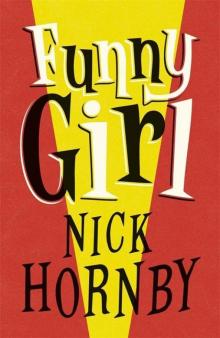 Funny Girl
Funny Girl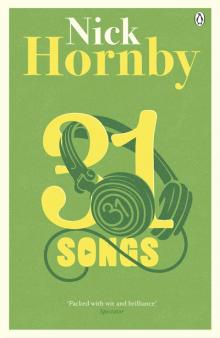 31 Songs
31 Songs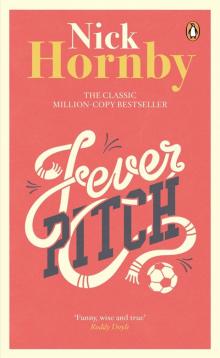 Fever Pitch
Fever Pitch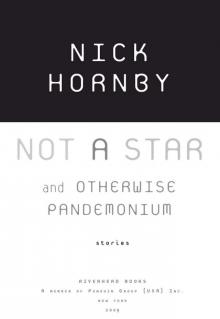 Not a Star and Otherwise Pandemonium
Not a Star and Otherwise Pandemonium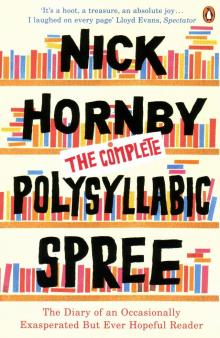 The Complete Polysyllabic Spree
The Complete Polysyllabic Spree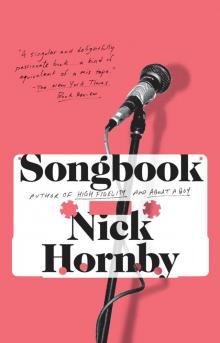 Songbook
Songbook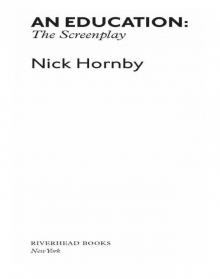 An Education
An Education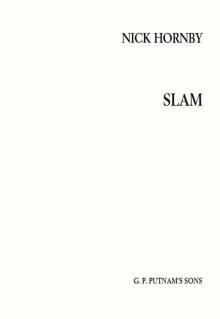 Slam
Slam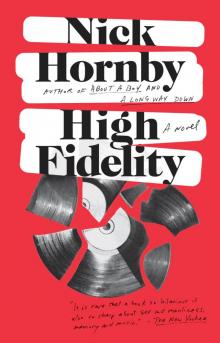 High Fidelity
High Fidelity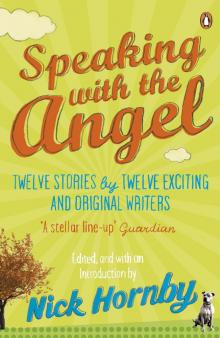 Speaking With the Angel
Speaking With the Angel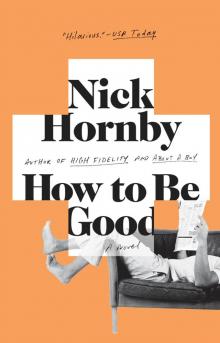 How to Be Good
How to Be Good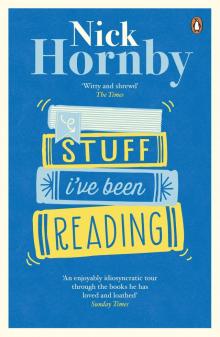 Stuff I've Been Reading
Stuff I've Been Reading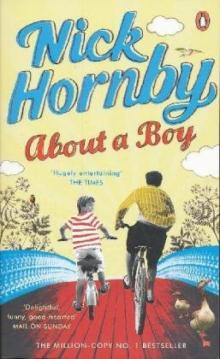 About a Boy
About a Boy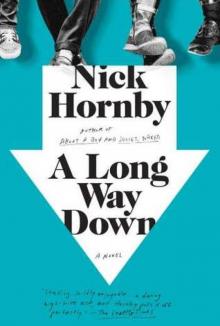 A Long Way Down
A Long Way Down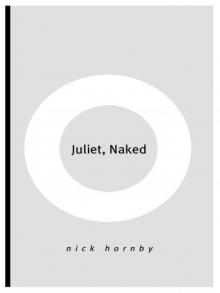 Juliet, Naked
Juliet, Naked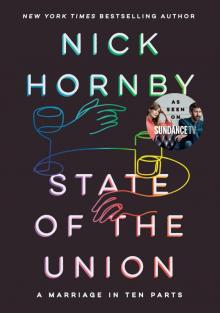 State of the Union
State of the Union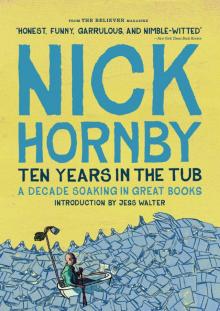 Ten Years in the Tub: A Decade Soaking in Great Books
Ten Years in the Tub: A Decade Soaking in Great Books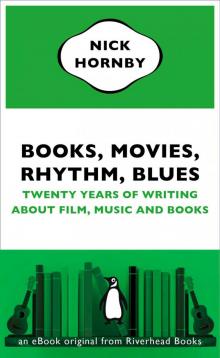 Books, Movies, Rhythm, Blues: Twenty Years of Writing About Film, Music and Books
Books, Movies, Rhythm, Blues: Twenty Years of Writing About Film, Music and Books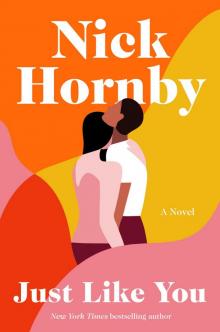 Just Like You
Just Like You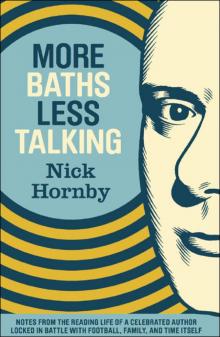 More Baths Less Talking
More Baths Less Talking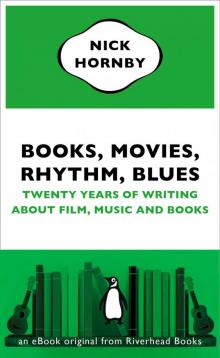 Books, Movies, Rhythm, Blues
Books, Movies, Rhythm, Blues